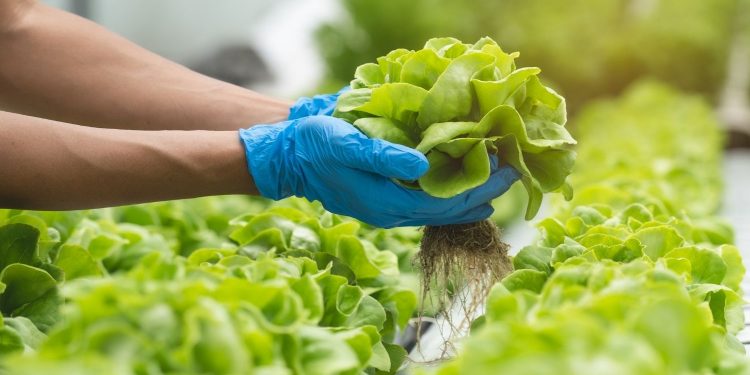Are you looking to get into hydroponic gardening but aren’t sure which method is best for you? Try one of these hydroponic systems to start on the right foot!
When you’re just starting out as a hydroponic gardener, you may feel overwhelmed by how many different types of hydroponic gardening systems there are. Each one requires different levels of maintenance and space, and the names of the methods might begin to blend in your mind and lose their meanings. You don’t need to feel overwhelmed by information—with this short guide, you can figure out which hydroponic system is best for you and narrow down your search for hydroponic supplies.
Wick System
A good starter system for novice hydroponic gardeners is a basic wick system. Wicking relies on the laws of physics—specifically the capillary action—to do the work when plants get thirsty. All you’ll need to create a wick-based hydroponic garden are a grow tray, a nutrient solution basin, wicks, nutrients, and a hydroponic growing medium. Because it doesn’t require any electricity or moving parts, the wick system is easy to take on as a DIY project.
Place your plants and medium in the grow tray or containers, allow the wick to dangle into the basin below, and fill the basin with water and nutrients. Your plants will do the rest. Make sure to watch for mold growth on the wicks—they may require replacement if you don’t choose a mold-proof material.
Kratky System
If you’ve ever tried to grow a celery stalk or an onion in a glass of water, you’ve tried the Kratky hydroponic system. This simple hydroponic system is perfect for children or for those using scraps from cooking or restaurants. It also fits well in small areas, such as on wall decor or in studio apartments.
While Kratky plants are simple and don’t require much maintenance, you must make sure you aren’t drowning the roots in their own nutrients. Adding an airstone to the water will keep it oxygenated to prevent drowning. With regular pH tests and nutrient supplements, you can grow small plants in net pots.
Ebb and Flow System
For gardeners who want to start with an easy-to-learn system that also allows you to add complexity as you learn more, try an ebb and flow hydroponic garden. Once you learn how an ebb and flow system works with its constant cycle of flooding and draining, you can move on to growing more difficult plants and trying different automation methods. You can also grow larger plants with an ebb and flow system than you can with the two previous methods!
Drip Irrigation System
The final candidate to consider when you’re wondering which hydroponic system is best for you is the drip irrigation system. These popular hydroponic gardens use air pumps, tubing, and drippers to give plants the nutrients they need. Once you attach a timer to the system, it becomes a relatively hands-off garden that will only require you to refill the basin and care for any signs of malnourishment. The slow dripping helps prevent root rot and will ensure that your plants get nutrients right where they need them most.




